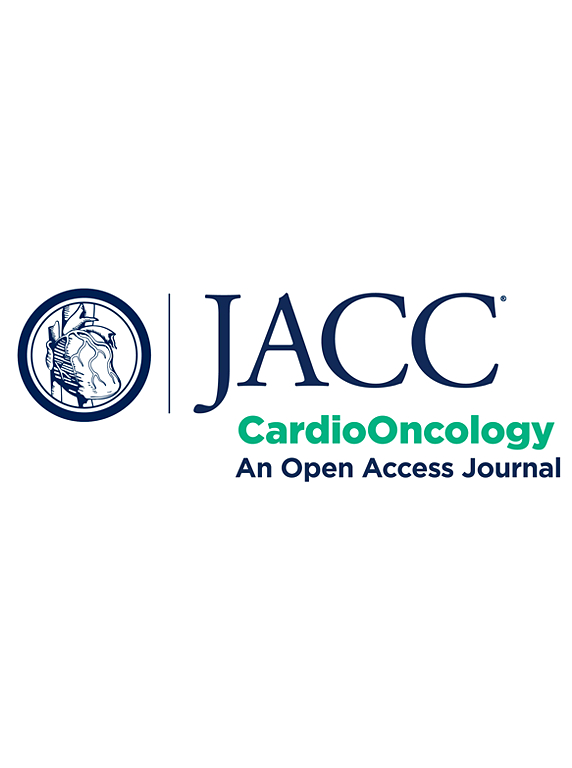Longitudinal Patterns of Cardiovascular Disease and Cancer Mortality in Renal Cell Carcinoma Patients by Tumor Stage
IF 12.8
1区 医学
Q1 CARDIAC & CARDIOVASCULAR SYSTEMS
引用次数: 0
Abstract
Background
Cardiovascular disease (CVD) is the leading cause of non-cancer deaths among patients with renal cell carcinoma (RCC).
Objectives
The authors sought to investigate how CVD and RCC death rates change post-RCC diagnosis and time-dependent risk factors for death, across different tumor stages.
Methods
Adults diagnosed with a first RCC from the Surveillance, Epidemiology, and End Results database (2004-2020) were included in this study. Poisson regression was used to model RCC and CVD death rates over 16-year follow-up, identifying a crossover time when the curves intersected, overall and by tumor stage. Fine-Gray competing risk models were implemented to evaluate the time-varying associations of risk factors with CVD and RCC deaths.
Results
Among overall 116,836 RCC patients, the CVD death rate overtook RCC death rate at 13.7 (95% CI: 12.0-15.4) years during follow-up. For stage I RCC patients, the crossover time was sooner at 2.8 (95% CI: 2.0-3.7) years, with all subgroups either experiencing a crossover or having a consistently higher CVD death rate than RCC death rate. No crossover time was identified for stage II-IV overall. Patients aged ≥75 years and non-Hispanic Black patients experienced a crossover time across all tumor stages. Several sociodemographic and clinical characteristics showed consistent associations with short- and long-term mortality from RCC and CVD.
Conclusions
In RCC patients, stage I individuals showed a pronounced trend where CVD death became dominant over RCC death during survivorship, with consistent patterns by different sociodemographic and clinical characteristics. Management of both cancer and CVD during critical periods is essential for improving survival outcomes in RCC patients, with strategies tailored to tumor stage.
肾细胞癌患者心血管疾病与肿瘤分期死亡率的纵向分布规律
背景:心血管疾病(CVD)是肾细胞癌(RCC)患者非癌性死亡的主要原因。目的:作者试图研究不同肿瘤分期CVD和RCC死亡率在RCC诊断后的变化和时间依赖性死亡危险因素。方法从监测、流行病学和最终结果数据库(2004-2020)中诊断为首次RCC的成年人纳入本研究。使用泊松回归对16年随访期间的RCC和CVD死亡率进行建模,确定曲线相交时的交叉时间,总体和肿瘤分期。采用细灰色竞争风险模型来评估危险因素与CVD和RCC死亡的时变关联。结果在116,836例RCC患者中,CVD死亡率在随访期间超过RCC死亡率13.7年(95% CI: 12.0-15.4)。对于I期RCC患者,交叉时间较早,为2.8年(95% CI: 2.0-3.7),所有亚组要么经历了交叉,要么心血管疾病死亡率始终高于RCC死亡率。总体而言,II-IV期未发现交叉时间。年龄≥75岁的患者和非西班牙裔黑人患者经历了所有肿瘤分期的交叉时间。一些社会人口学和临床特征显示了与RCC和CVD的短期和长期死亡率的一致关联。结论在RCC患者中,I期个体在生存期间CVD死亡占主导地位的趋势明显,且不同的社会人口学和临床特征具有一致的模式。在关键时期对癌症和心血管疾病进行管理对于改善RCC患者的生存结果至关重要,并根据肿瘤分期制定相应的策略。
本文章由计算机程序翻译,如有差异,请以英文原文为准。
求助全文
约1分钟内获得全文
求助全文
来源期刊

Jacc: Cardiooncology
Multiple-
CiteScore
12.50
自引率
6.30%
发文量
106
期刊介绍:
JACC: CardioOncology is a specialized journal that belongs to the esteemed Journal of the American College of Cardiology (JACC) family. Its purpose is to enhance cardiovascular care for cancer patients by publishing high-quality, innovative scientific research and sharing evidence-based knowledge.
The journal aims to revolutionize the field of cardio-oncology and actively involve and educate professionals in both cardiovascular and oncology fields. It covers a wide range of topics including pre-clinical, translational, and clinical research, as well as best practices in cardio-oncology. Key areas of focus include understanding disease mechanisms, utilizing in vitro and in vivo models, exploring novel and traditional therapeutics (across Phase I-IV trials), studying epidemiology, employing precision medicine, and investigating primary and secondary prevention.
Amyloidosis, cardiovascular risk factors, heart failure, and vascular disease are some examples of the disease states that are of particular interest to the journal. However, it welcomes research on other relevant conditions as well.
 求助内容:
求助内容: 应助结果提醒方式:
应助结果提醒方式:


